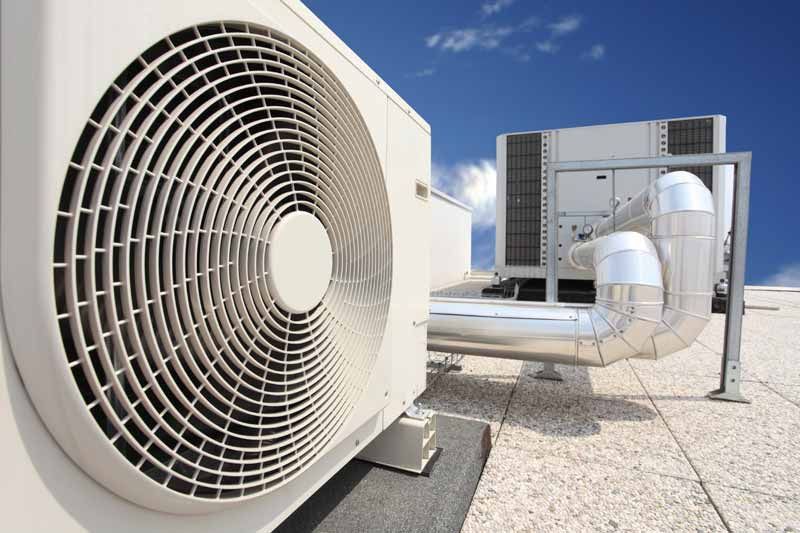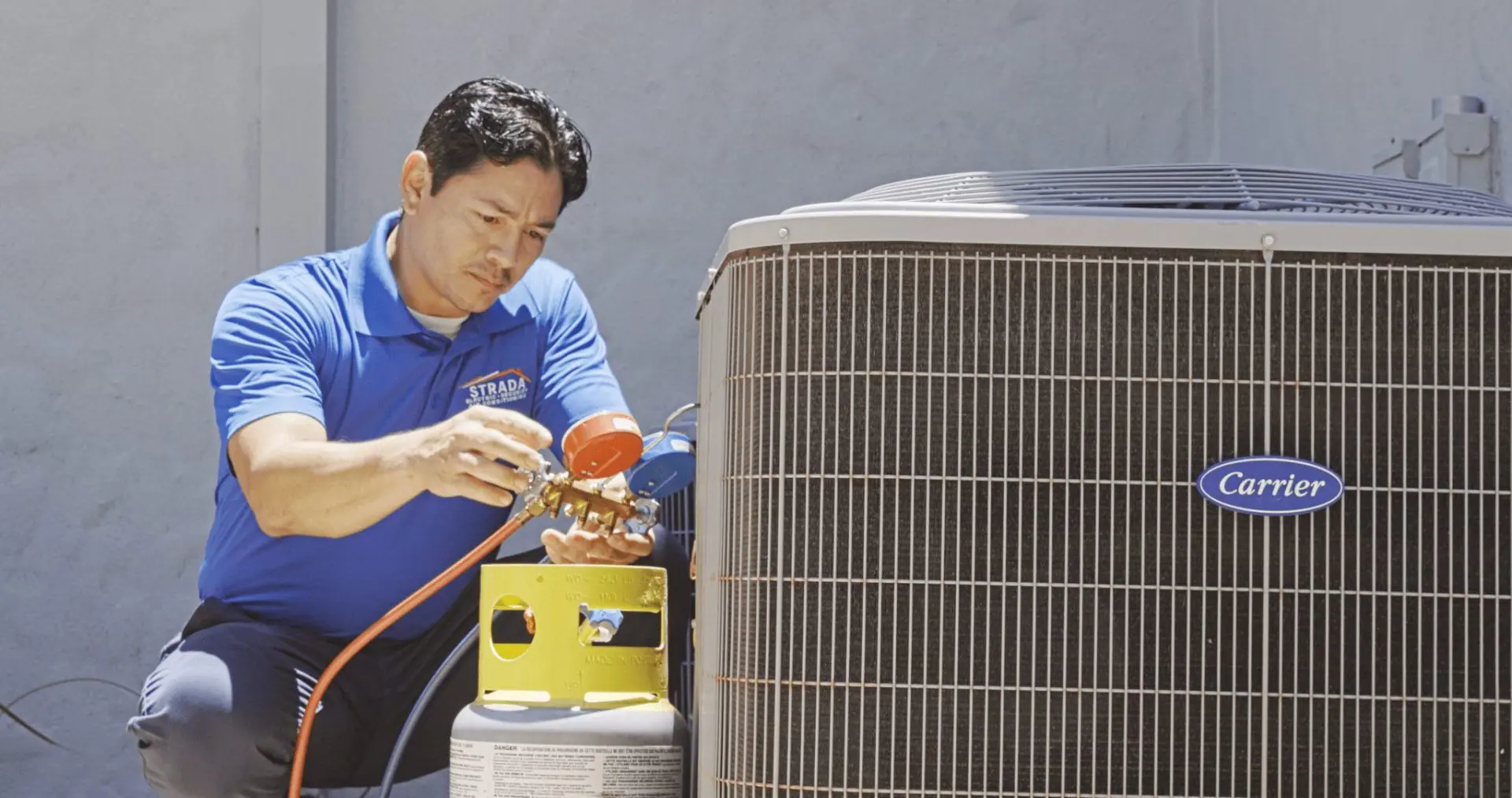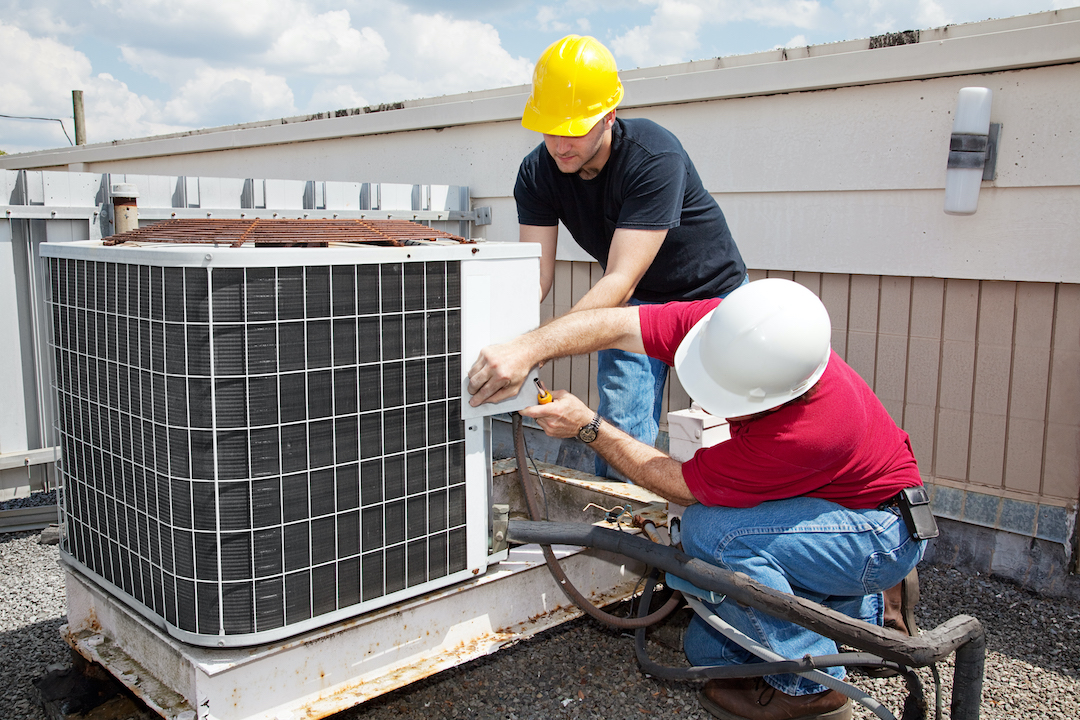How a Warmth Pump and Heater Work Together to Maximize Your Home's Home heating Effectiveness
Understanding just how a warm pump and heating system work with each other is necessary for property owners looking for effective home heating remedies. Each system has its strengths, providing a well balanced strategy to home convenience. The heat pump succeeds in modest temperature levels, while the furnace supplies rapid warmth during extreme cold. This synergy not only minimizes energy prices but also enhances the life-span of both home appliances. What aspects influence this cooperation, and how can homeowners optimize their benefits?
Comprehending Heat Pumps: How They Function
Several people may be unfamiliar with their internal operations, warm pumps play an important duty in modern heating systems. These devices run by transferring warm from one area to one more, making use of the principles of thermodynamics. In colder months, a heatpump essences warm from the outside air, ground, or water, and transfers it inside to warm up the living space. On the other hand, throughout warmer months, it can turn around the process, acting as an ac unit by getting rid of warmth from inside to the outside.Heat pumps are composed of an evaporator, expansion, compressor, and condenser shutoff. The cooling agent within the system takes in warmth as it vaporizes at low temperature levels and pressures. The compressor after that raises the stress and temperature level of the cooling agent, permitting it to release heat as it condenses. This efficient procedure can considerably decrease power usage compared to conventional heating approaches, making heatpump a sustainable option for environment control in homes.
The Role of Heaters in Home Heating
Heating systems play an essential duty in home heating by supplying a reputable source of warmth throughout the chillier months. They operate by generating heat via burning or electrical resistance, dispersing it throughout the home through air ducts or glowing systems. The performance of a heating system is usually measured by its Annual Gas Use Effectiveness (AFUE) ranking, which shows just how effectively the device converts fuel right into heat.Furnaces can make use of numerous power resources, including all-natural gas, oil, lp, or electrical energy, permitting home owners to pick the most ideal choice for their demands. Unlike warm pumps, which may have a hard time in extreme chilly, furnaces keep consistent efficiency, guaranteeing that interior temperatures continue to be comfortable no matter outside conditions. Furthermore, modern heating systems typically come equipped with sophisticated technology, such as smart thermostats and variable-speed blowers, improving their performance and responsiveness. This flexibility makes heaters an important element in all-encompassing home heating approaches.

Advantages of Utilizing Both Systems Together
Combining the strengths of both heaters and warmth pumps can bring about an extra reliable and efficient home heating option. Utilizing both systems allows property owners to take benefit of the heatpump's power efficiency during milder temperatures while depending on the heater for more severe cold problems. This dual approach can substantially lower power expenses, as heatpump eat less power than standard heating approaches when temperatures are moderate.Additionally, utilizing both systems together can improve convenience degrees in the home. Warm pumps can provide constant, even heating, while furnaces can promptly increase ambient temperature levels when required. Moreover, the combination of both systems can expand the life expectancy of devices by decreasing deterioration on each unit, as they share the work. Eventually, home owners can enjoy a balanced, cost-efficient heating service that readjusts effortlessly to differing climate condition, making certain a cozy and welcoming home throughout the winter season.
Just How Warmth Pumps and Furnaces Enhance Each Other
When home owners incorporate heat pumps and heaters, they develop a corresponding heater that makes the most of performance and comfort. Heat pumps run by moving heat from the outdoors air or ground, making them extremely reliable in moderate environments. They succeed during milder temperature levels, supplying cost-efficient heating. Conversely, furnaces generate warm via burning or electrical resistance, supplying strong, instant heat throughout extreme cold conditions.The mix of these 2 systems permits vibrant adjustments based on temperature variations. Throughout warmer months or milder winter season days, the warm pump can take the lead, conserving energy and minimizing expenses. As temperatures drop, the heater can effortlessly involve, guaranteeing regular heat throughout the home. This synergy not only maximizes power usage yet likewise enhances the lifespan of both systems, as each device runs within its perfect performance array. With each other, they produce a balanced setting that adapts to varying environment demands.
Optimizing Effectiveness: Tips for Homeowners
Property owners can enhance their home heating effectiveness through numerous practical approaches. Establishing a normal upkeep routine, integrating wise thermostat technology, and implementing efficient insulation and sealing remedies are essential steps. These measures not just improve comfort yet additionally decrease power costs.
Routine Maintenance Set Up
To ensure optimal heating effectiveness, establishing a normal maintenance routine is essential for any kind of home. Home owners should prioritize routine evaluations of both heatpump and furnaces to establish peak performance. This includes transforming air filters each to three months, as stopped up filters can considerably lower efficiency. Furthermore, scheduling specialist maintenance at least when a year permits professionals to identify and deal with prospective concerns prior to they intensify. House owners should likewise clean the heatpump's exterior device to stop particles accumulation that can impede air movement. By sticking to a normal upkeep routine, home owners not only enhance their heating unit' efficiency but also extend their lifespan, causing higher convenience and minimized energy expenses throughout the chillier months.
Smart Thermostat Combination
Integrating a smart thermostat right into a home heating system can considerably boost power efficiency, especially as it permits precise control over temperature setups. These gadgets can find out the home owner's timetable and preferences, automatically readjusting the temperature level to maximize convenience while minimizing power usage. For important link circumstances, they can decrease heating during times when the home is unoccupied, minimizing unneeded consumption. Several wise thermostats likewise provide real-time power usage information, allowing property owners to make informed decisions concerning their home heating behaviors. Furthermore, remote access by means of smartphone applications enables customers to adjust settings from anywhere, guaranteeing the home is warm upon return. Overall, wise thermostat assimilation not just boosts comfort however considerably adds to energy financial savings and efficiency.
Insulation and Sealing Solutions
Smart thermostats play an essential duty in energy effectiveness, yet their effectiveness can be considerably improved by appropriate insulation and sealing services. House owners need to prioritize shielding attic rooms, floorings, and walls to decrease warmth loss. High-grade insulation materials, such as spray foam or fiberglass, can considerably boost thermal resistance. In addition, securing spaces around home windows, air ducts, and doors protects against cool air seepage and warm retreat. Weatherstripping and caulking work approaches for resolving these leakages - ductless mini splits. Regular inspections for air leaks, along with making use of blower door examinations, can assist determine issue areas. By purchasing insulation and sealing, house owners can enhance the performance of their heating unit, ultimately resulting in decreased power intake and lower straight from the source utility bills
Typical Misconceptions Regarding Warm Pumps and Furnaces
What misunderstandings surround warm pumps and heating systems? Lots of individuals mistakenly think that heatpump are inefficient in cooler environments. In truth, modern-day heatpump are developed to run efficiently also in reduced temperatures, giving reliable heating throughout winter months. One more common misconception is that heating systems are always more reliable than heatpump. However, this depends on the details energy resources and effectiveness ratings of the units in inquiry. Some may likewise think that making use of both systems concurrently is unneeded, but actually, this combination can maximize heating effectiveness, particularly during severe climate condition. Furthermore, people usually presume that heatpump need constant maintenance, when truthfully, they have similar maintenance needs to conventional furnace. By unmasking these misconceptions, home owners can make more educated decisions concerning their home heating choices, ultimately causing boosted convenience and power efficiency in their homes.
Maintenance Factors To Consider for Combined Equipments

Regularly Asked Inquiries
Can Heat Pumps Work Properly in Extremely Cold Climates?
Heatpump can battle in incredibly chilly environments due to lowered performance and warmth extraction constraints. Nevertheless, developments in modern technology have led to models created for far better efficiency in such conditions, boosting their viability in severe atmospheres.
How Much Time Do Heat Pumps and Furnaces Normally Last?
Heatpump commonly last 15 to twenty years, while heaters have a life-span of 15 to three decades. Normal upkeep can prolong their durability, making sure effective procedure and lowering the demand for early replacements.

What Is the Ordinary Expense of Installing Both Equipments?
The average price of installing both a heatpump and a heating system normally varies in between $5,000 to $10,000 - heat pump service. Factors affecting this expense consist of system dimension, installment complexity, and regional labor prices
Exist Tax Rewards for Using Energy-Efficient Heating Solutions?
Several property owners ask about tax rewards for energy-efficient furnace. Different federal and state programs typically use credit histories or refunds, motivating the fostering of lasting modern technologies to reduce energy usage and promote ecological duty.
Just how Do I Select the Right Dimension Heatpump and Heater?
Picking the right dimension heat pump and furnace includes determining the home's square video footage, considering insulation high quality, and reviewing neighborhood environment. Consulting a specialist can assure optimal system efficiency and power effectiveness based on details requirements. heat pump service. Comprehending exactly how a warm pump and heating system work together is important for house owners looking for effective heating services. In colder months, a heat pump extracts heat from the outdoors air, ground, or water, and transfers it inside to heat the living room. When property owners integrate heat pumps and heaters, they develop a corresponding home heating system that maximizes performance and convenience. Heat pumps run by transferring heat from the outside air or ground, making them highly reliable in modest climates. Warm pumps can have a hard time in very cool environments due to decreased efficiency and warmth removal limitations